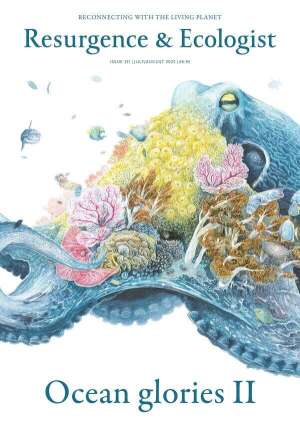The one thing all species of sea urchin have in common is a unique internal structure known as Aristotle’s lantern, which is in effect a five-part jaw located on the underside of the urchin’s body that is used to scrape algae and other foods from surfaces.
The way this extraordinary feeding mechanism works is that the five hard plates come together like teeth, allowing the urchin to scrape, cut and chew once positioned over a food source. And as well as this special ‘jaw’, the urchin has tube feet, which can be ‘glued’ (thanks to the secretion of a sticky substance) to various surfaces, ensuring ...
There are approximately 459 more words in this article.
To read the rest of this article, please buy this issue, or join the Resurgence Trust. As a member you will receive access to the complete archive of magazines from May 1966.
If you are already a member, please Sign in







